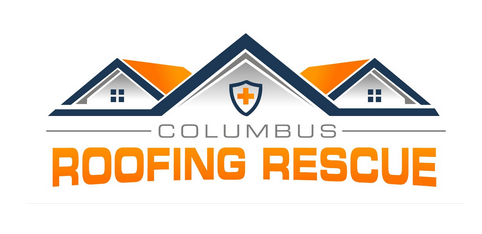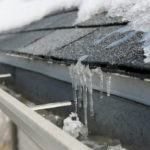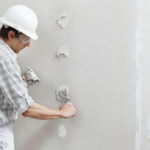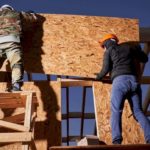
10 Warning Signs You Need a New Roof
Knowing when to get a new roof for your home is sometimes tricky because roof damage happens subtly and over time. But if you act once water leaks into your house or your ceiling changes color, you’ll most likely need to replace your roof fully.
By the time you notice roof damage, you’ve missed the chance to replace just your roof. Now you’ll need to sort out the rest of the damage in your home. That’s why it’s vital to regularly inspect your roof and check for warning signs of damage.
So, how do you tell when it’s time to replace your roof? If you notice any of the following warning signs, it’s possible you need a new roof.
Aging Roof
The shelf-life of a roof depends on the material used to make it. The International Association of Certified Home Inspectors outlines the following lifespans for different types of roofs.
- Metal lasts 40 to 80 years. Zinc can last about 100 years, while copper might last 70 years
- Asphalt shingles can last 20 to 50 years
- Clay or concrete tiles can last 50 to 100 years
- Slate can last between 60 and 175 years
- Wood shingles and shakes can last 25 to 50 years
If your type of roof is nearer the end of its lifespan, it’s perhaps time to hire a professional roofing service and ask for an estimate.
You may decide to replace your roof altogether. If your roof is made up of asphalt shingles, you can overlay the old shingles and save about 25% of your money. However, it’s always better to take down the old roof and start over because overlaying old shingles shortens the lifespan of new ones by about 50%.
Roof Cracks
Wind and sun damage are often the cause of roof cracks. If only a few shingles are cracked, the most practical option would be to replace them. But if the cracks are distributed all over, this is a warning sign that you need a replacement. If you spot cracks on your shingles, you should replace your roof within 3-5 years.
Roof Leaks
One of the most evident signs of roof damage is roof leaks. Regularly go to your attic to find roof leaks, ideally after rainfall. Examine your attic for signs of water leaks because significant leaks in your house will likely come from there.
It’s also vital to check for ice dams on the exterior of your roof. Ice dams build up when the snow melts on your roof, trickles down to eaves, and freezes again. When water runs down your roof and meets ice cream, it can start to run beneath your shingles and potentially end up inside your house.
If roof leaks are limited to a specific part of your roof, you might not require total roof replacement. In any case, however, don’t hesitate to call in a professional roofer to check it out. Remember, most professional roofers offer affordable inspections and installations.
Missing Shingles
If only a few shingles are missing, you don’t need a complete roof replacement. But if several shingles are missing, it can mean severe roof damage.

Missing shingles are a warning sign of roof damage because that probably means the wind has caused many shingles to fall off or come loose and might have let in water, possibly damaging the wood beneath.
Check for missing shingles, especially around roof valleys, because this is where snow and rain gather as they run down your roof. Missing shingles will result in water leaks, which can cause significant damage to your home.
Sagging Roof
If you notice sagging in some parts of your roof, this may be a serious sign of roof damage. Sagging is usually a sign of structural weakness in your roof, like inadequate spacing or bracing. If you spot sagging on your roof, you must bring in a roofing expert immediately.
Rotting Wood
Rotting wood on a roof is generally a sign of a damaged roof that must be replaced. If you notice rooting wood, it can weaken your roof’s structural integrity. In that case, make sure to hire a professional roofing contractor immediately.
Damaged Flashing
If your roof has any exposed flashing, like around your chimney, have it inspected by a professional roofing contractor. If there are cracked, loose, or damaged sections, have them repaired.
If you see water stains or leaks around any of those sections, the problem may be more severe based on how long the leaking has gone on. Moisture causes rot, and if it spreads into your home, your roof may have structural damage.
Growth
Mold, moss, algae, and mildew are common growths from water leaks and damage. Since they’re generally easy to notice, they’re an obvious sign to keep an eye on when determining the condition of your roof.
Moss usually grows on roof areas that don’t receive much sunlight, particularly in cool, wet climates. It keeps moisture on the roof’s surface. Over time, the moisture can damage the granules on the shingles in freezing climates.
While you can brush off moss, algae, mold, and mildew, that won’t stop it from growing back again, you can even damage your roof’s surface in the process! The best solution is to hire a professional roofing company to permanently clear vegetation off your roof.
Poor Energy Efficiency
Have you noticed that your heating bills tend to shoot up during winter? If so, your inadequately insulated roof could be the cause. While most homeowners tend only to insulate their windows and doors to reduce energy costs, the roof is often the culprit.
An inadequately insulated roof lets air in and out far more easily, which may result in soaring energy bills, particularly during the winter.
Is It Time to Replace Your Roof?
If your roof shows any of these warning signs of damage, it’s vital to have it inspected as early as possible. Hire a professional roofing contractor to evaluate the state of your roof and decide whether to repair or replace it.
While investing in a brand-new roof can be costly, it’s a great way to keep your family safe and protected from the elements. Moreover, if you intend to sell your home, replacing your roof will increase its value to potential buyers.



